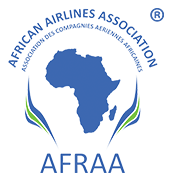RTX’s Pratt & Whitney announces North American Technology Accelerator

Second center of excellence to advance MRO technologies and performance
CHICAGO, April 9, 2024 /PRNewswire/ — (MRO Americas) Pratt & Whitney, an RTX (NYSE: RTX) business, today announced details of its North American Technology Accelerator (NATA), a commercial and military aftermarket operations center of excellence based in Florida. The NATA will have dedicated floor space, equipment and resources for the development and industrialization of technology insertion programs that will support the company’s global maintenance, repair and overhaul (MRO) network.
The accelerator projects in Florida are primarily focused on material restoration and process automation including advanced repairs, digital inspection, adaptive processing, and coating and masking for compressor and fan parts, blades, cases, and more. The benefits of these technologies will reduce cost, material demand, and environmental impact, while decreasing turn times, improving throughput, and delivering value to customers.
“NATA combines data science with people know-how and state-of-the-art automation to help address customer pain points such as inventory management and part availability, while accelerating our improved repair capabilities and efficiency to better serve our customers,” said Kevin Kirkpatrick, vice president, Aftermarket Global Operations at Pratt & Whitney.
Key projects include additive repairs for critical GTF engine components. With this new additive repair technology alone, Pratt & Whitney expects to recover $100 million worth of parts over next five years to support GTF MRO ramp.
NATA complements Pratt & Whitney’s fully operational Singapore Technology Accelerator (STA), which was established in September 2022 with a focus on robotics, advanced inspection, connected factory and shop digital twin. STA has since delivered over 30 innovations which will maximize the productivity in MRO processes. Both accelerators leverage other RTX research and development expertise to enhance automation, connectivity, analytics and intelligence to benefit aftermarket operations. Combined annual savings of at least $24 million is expected from Pratt & Whitney’s accelerator programs.
NATA and STA are part of Pratt & Whitney’s Industry 4.0 transformation, enabled by its Customer Oriented Results and Excellence (CORE) operating system which is at the foundation of the business’ technology accelerator strategy. CORE provides a common language, toolset, and methodology for delivering on customer commitments. The CORE system assesses and pinpoints critical areas and provides a framework from which to execute.
About Pratt & Whitney
Pratt & Whitney is a world leader in the design, manufacture and service of aircraft engines and auxiliary power units. To learn more, visit www.prattwhitney.com.
About RTX
With more than 185,000 global employees, RTX pushes the limits of technology and science to redefine how we connect and protect our world. Through industry-leading businesses – Collins Aerospace, Pratt & Whitney, and Raytheon – we are advancing aviation, engineering integrated defense systems, and developing next-generation technology solutions and manufacturing to help global customers address their most critical challenges. The company, with 2023 sales of $69 billion, is headquartered in Arlington, Virginia.
For questions or to schedule an interview, please contact corporatepr@rtx.com.







